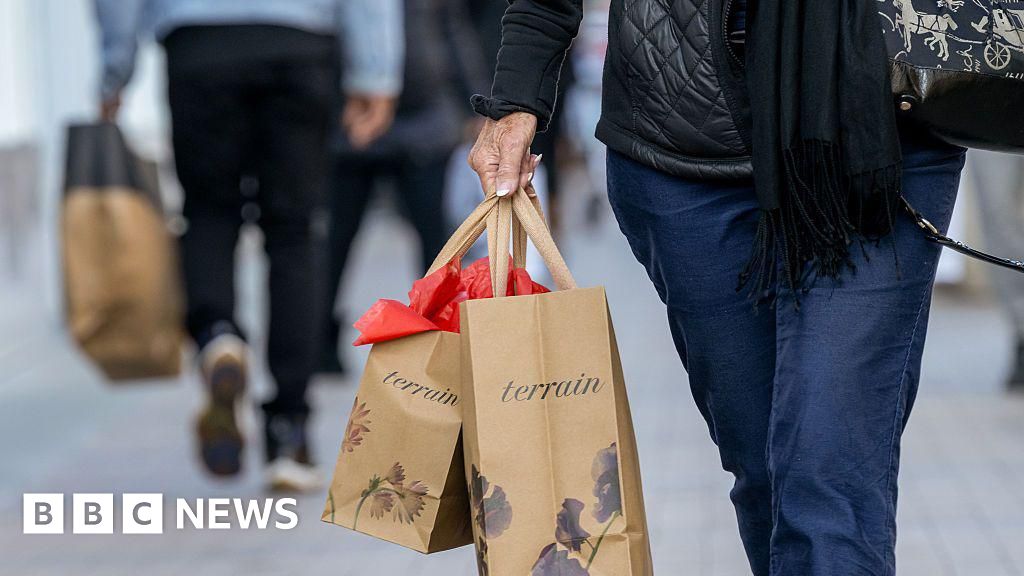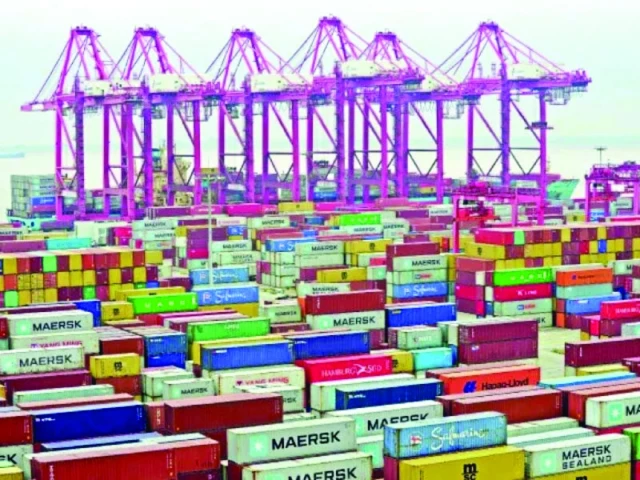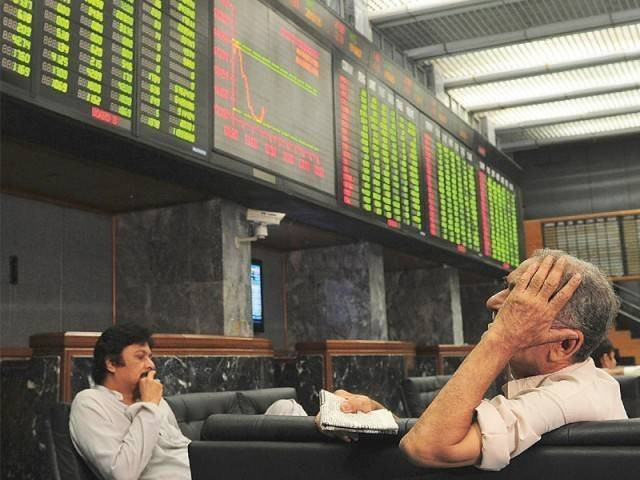Business
Breaking free from boom-bust cycles | The Express Tribune

ISLAMABAD:
There is a general perception that Pakistan’s economy is perpetually trapped in a “boom-and-bust” cycle and will likely remain so. This self-limiting belief has convinced successive governments and the public that any attempt at rapid economic growth is inevitably followed by crisis or stagnation.
It’s a mindset not unlike the myth of Sisyphus, the Greek king condemned by gods to eternally push a boulder uphill, only for it to roll back down just before reaching the summit. Similarly, economic pessimists dismiss every early sign of recovery as part of a futile, exhausting cycle, one that’s destined to end in failure.
The prevailing view is that when a new government comes to power, its first task is to secure an IMF bailout, which provides short-term stability and external financing. This fuels a consumption-led boom, pushing GDP growth to 5% or 6%.
Encouraged by early success, the government increases spending on subsidies and projects. But because this growth lacks export depth or productivity gains, the current account deficit widens, reserves deplete, and the country once again returns to the IMF, restarting the cycle. This raises two questions: does the data confirm that Pakistan has always been trapped in boom-bust cycles, and has it ever outperformed its peers over a sustained period? Both can be answered by comparing Pakistan’s record with India, often seen as a post-1990s growth model.
According to Statisticstimes.com, between 1960 and 2008, Pakistan’s per capita income was higher than India’s for 35 years, while India surpassed Pakistan for only 14 years. Despite volatility, Pakistan performed better overall for most of that period.
But 2008 marked a turning point. Pakistan’s exports began to stagnate, and its GDP growth rate also starting declining, averaging about 3% since then. In contrast, India, Bangladesh, and other regional peers averaged over 6% GDP growth. As a result, Pakistan’s per capita income, which was higher at $1,088 in 2008 compared to India’s $994, fell behind and by 2024 had trailed to $1,643 against India’s $2,300.
So, what changed in 2008? In addition to the global financial crisis, two external shocks hit developing countries: crude oil prices rose by 180% and food commodity prices by 60%. In Pakistan, a newly elected government responded by imposing steep regulatory duties on imports, reversing the trade liberalisation that had been gradually achieved since the 1990s. While oil and food prices normalised by 2009, those duties remained.
Since 2014, additional customs duties have further isolated Pakistan from the booming global trade flows. These new tariff barriers resulted in Pakistan being ranked as having “the second highest effective protection for domestic producers of final consumption goods in the world.” After nearly 17 years of setbacks from protectionist policies, the government has finally recognised that global isolation is unsustainable for a small economy. To lift people out of poverty, as China, Vietnam, and other countries have done, Pakistan must boost productivity and expand exports at a pace comparable to successful developing nations.
The recent budget marks an important step towards trade liberalisation. Though reforms will be phased in over the next five years, they offer hope of putting the country back on a sustainable growth path and reducing dependence on the IMF bailout packages. With the reconfiguration of global supply chains and the opening of the economy, Pakistan could begin to attract foreign investment at levels far beyond the current trickle.
This transition will not be easy. For almost two decades, large industries have been shielded from competition by high tariff walls. Many firms have failed to upgrade their plants or adopt modern technology, leading to higher energy consumption and lower productivity. Consequently, although Pakistan produces several engineering goods, such as household appliances, vehicles, and mobile phones, it cannot compete internationally. Instead, producers prefer to sell domestically, where tariff protection has so far guaranteed higher profits.
Furthermore, a deep-rooted fear of the boom-bust cycle will continue to constrain the economy unless excessive caution is replaced with a more balanced approach that allows for measured risk-taking. Monetary policy illustrates this mindset clearly: Pakistan now has the widest real interest rate gap among its peers, 11% compared to 5.5% in India, despite similar inflation of around 5%. This large disparity continues to stifle investment, slow the growth of large-scale manufacturing, and keep unemployment high.
It is time to acknowledge the economic missteps of the past 17 years and work to regain the lost market share while catching up in GDP growth with peer economies. Pakistan must break free from the self-limiting fear of boom-and-bust cycles and instead pursue bold, forward-looking economic policies.
The decision to re-engage with the global economy and privatise loss-making enterprises is a vital first step, but lasting success will depend on dismantling the regulatory barriers and attracting stronger investment to unlock growth and reduce dependence on external bailouts.
The writer is a member of the PM’s Committee on Tariff Reforms and previously served as Pakistan’s Ambassador to the WTO and FAO’s representative to the UN
Business
US economy grows at fastest pace in two years

The US economy picked up speed over the three months to September, as consumer spending jumped and exports increased.
The world’s largest economy expanded at an annual rate of 4.3%, up from 3.8% in the previous quarter. That was better than expected, and marked the strongest growth in two years.
The figures offer a clearer picture of the state of the US economy heading into the end of the year, after data collection had been delayed by the US government shutdown.
The report showed consumer spending rising by 3.5%, compared with 2.5% in the previous quarter.
Business
Fish and chip shop offers 100 free Christmas meals in Southampton

“It’s just a way of us giving back to the community,” says a fish and chip shop owner, who is giving away 100 free meals on Christmas Eve.
Raj Khaira, from Southampton, has owned Top Catch fish and chips in Shirley for five years and says he wants to support lonely people in the area.
He says he feels lucky to have a big family but knows for some customers a conversation with a shopkeeper might be the only one they have some days.
He says the shop will give portions of sausage and chips to those in need as a way of “giving back to the people who haven’t got family around them and sometimes can’t afford a hot meal”.
Mr Khaira speaks about working in business all of his life and how much he enjoys meeting “different people every day, from different backgrounds”.
“I’ve done it since I was a young kid so it’s all I really know,” he says.
He adds that many of his customers are elderly and do not have connections over the festive period.
“Christmas for majority of us is probably going to be a joyful and busy day but for some people it’s probably going to be a quiet day,” he says.
After posting about the plans to donate on social media he received a lot of publicity and Mr Khaira is prepared to “probably do more than” 100 meals.
He says the shop has already organised a toy and present drop off to Southampton hospitals this December, with many of the donations coming from customers.
He says: “We’re only where we are as a busy shop because of our community and our lovely customers that come in and sometimes you’ve got to give back and I’m happy to do that.”
Looking back on some of the negative news reported in Shirley earlier this year with the rise in anti-social behaviour in the area, he admits he had suffered.
His shop window was smashed in the summer, but he says: “Christmas time lets us just try and forget that for a minute and just try and have a good time, and reflect back on the year and hopefully next year is going to be a better one.”
Business
Gold price shines by Rs8,500 per tola – SUCH TV

The price of per tola 24-karat gold in Pakistan increased by Rs8,500 on Tuesday, reaching Rs470,862 compared to Rs462,362 on the previous day.
According to the All Pakistan Sarafa Gems and Jewellers Association, the price of 10 grams of 24-karat gold rose by Rs7,288, climbing to Rs403,688 from Rs396,400 on last day.
Likewise, the rate of 10 grams of 22-karat gold went up by Rs6,681, closing at Rs370,060 against Rs363,379.
In the international market, gold prices increased by $85, reaching $4,485 compared to $4,400 on the previous day.
Meanwhile, the price of per tola silver and that of 10-gram remained stagnant at Rs Rs7,205 and Rs6,177, respectively. International silver prices also remained unchanged at $69.30.
-

 Business1 week ago
Business1 week agoStudying Abroad Is Costly, But Not Impossible: Experts On Smarter Financial Planning
-

 Fashion5 days ago
Fashion5 days agoIndonesia’s thrift surge fuels waste and textile industry woes
-

 Business1 week ago
Business1 week agoKSE-100 index gains 876 points amid cut in policy rate | The Express Tribune
-

 Sports1 week ago
Sports1 week agoJets defensive lineman rips NFL officials after ejection vs Jaguars
-

 Business5 days ago
Business5 days agoBP names new boss as current CEO leaves after less than two years
-

 Entertainment1 week ago
Entertainment1 week agoPrince Harry, Meghan Markle’s 2025 Christmas card: A shift in strategy
-

 Tech5 days ago
Tech5 days agoT-Mobile Business Internet and Phone Deals
-

 Sports5 days ago
Sports5 days agoPKF summons meeting after Pakistani player represents India in kabaddi tournament











